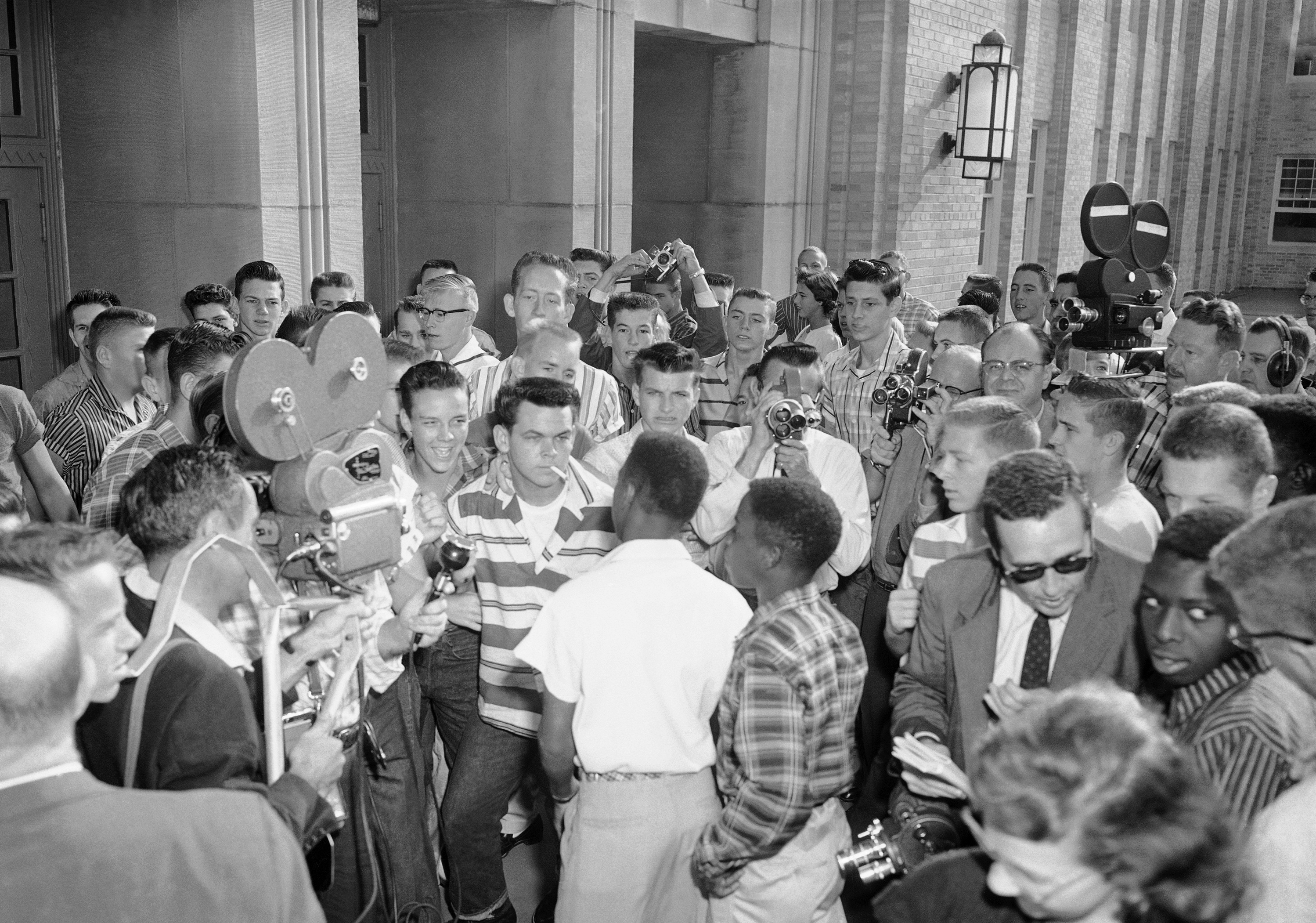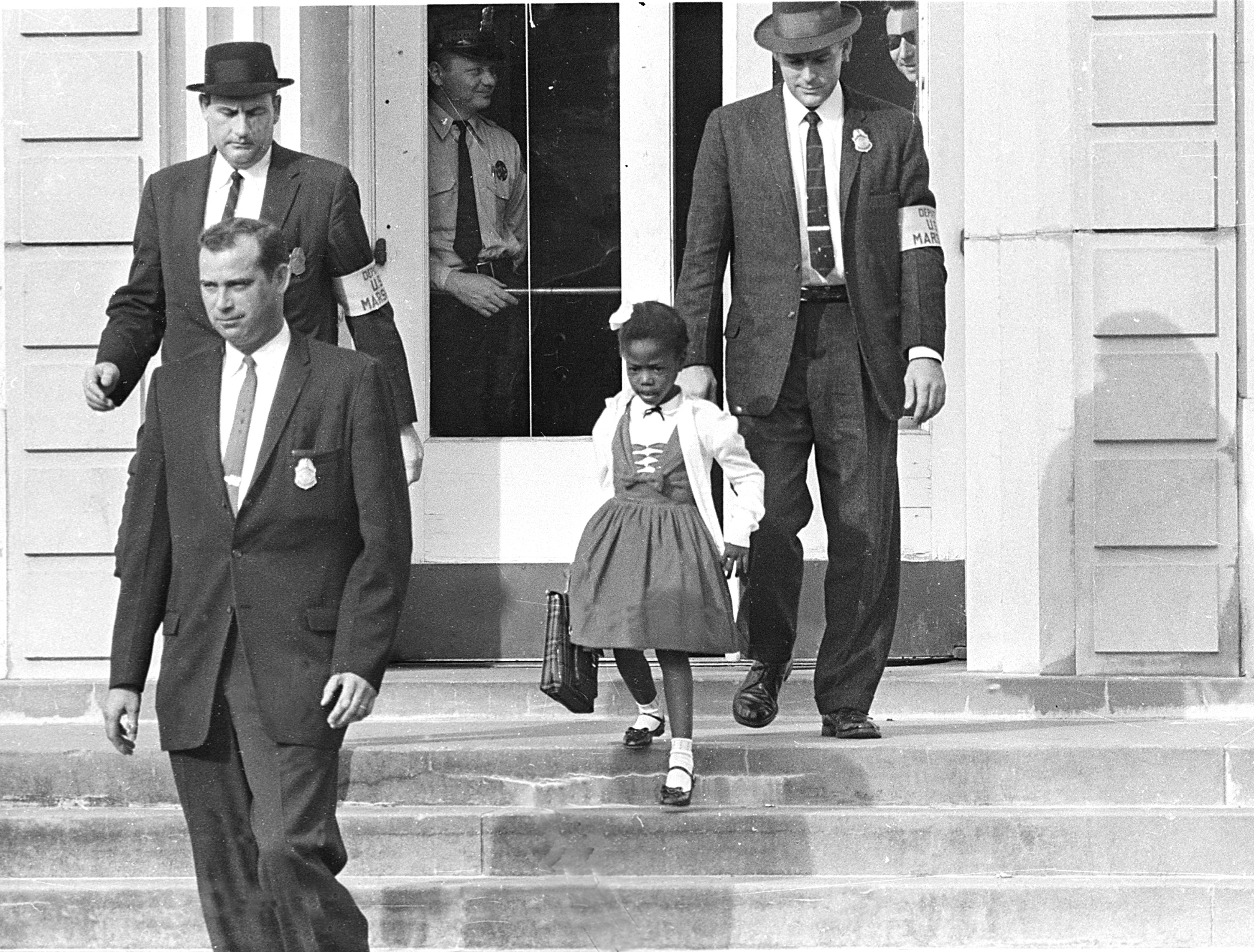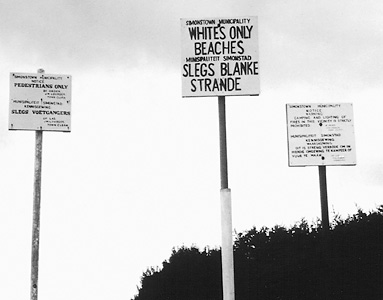Segregation is the separation of groups of people by custom or by law. It is often based on differences of race, religion, or ethnicity. Segregated societies place more importance on racial, religious, and ethnic identity than they place on other social, cultural, or political bonds. Segregation thus serves the political interests of the ruling elite because it makes it difficult for people of different races and ethnicities to work together to challenge their authority.
Segregation can occur in almost any area of life. It is particularly evident in housing, education, and employment. Almost all systems of segregation discourage marriage between people of different racial, religious, or ethnic groups. In the United States, for example, many states once outlawed marriage between white and nonwhite people. Segregationists believed that children of interracial couples challenged the purity of white racial identity. Thus, public spaces where different sexes mingled, for example theaters and trains, were more likely to be segregated than spaces where they did not.
Segregation almost always involves some kind of discrimination—that is, actions or practices by members of a dominant (more powerful) group that limit the opportunities of a subordinate (less powerful) group. The people most affected by racial segregation in the United States have been African Americans. However, segregation is not limited to the United States nor to bias against racial minority groups. It has been practiced in various forms in many countries throughout history.
Causes and effects of segregation
Segregation is usually the result of a long period of group conflict, with one group having more power and influence than another. The dominant group sometimes uses force, law, or custom to segregate a subordinate group. In time, segregation comes to be considered right, especially by the dominant group. A certain etiquette (code of behavior) governs relations between the different groups, and people who violate that etiquette risk becoming victims of punishment or violence.
Further support for segregation comes from hostile attitudes and feelings between groups. The dominant group typically believes its members are born with superior intelligence, talents, and moral standards. Social scientists call these false or exaggerated beliefs stereotypes. The dominant group uses stereotypes to justify its mistreatment of the subordinate group. Meanwhile, many members of the subordinate group develop a fear and distrust of the dominant group.
In a segregated society, members of the dominant group receive favored treatment. They expect—and often receive—access to the best education, employment, housing, and public services. Thus, segregation reinforces and justifies their belief in their own cultural, ethnic, or racial superiority. Most of them do not consider the system unfair but regard it as the proper, even natural, way for society to distribute its resources. Likewise, the subordinate group may develop a sense of inferiority that is reinforced by a system that denies it the social, political, and economic benefits enjoyed by others. Subordinate groups seldom accept their low position. They develop a politics of resistance that consists of individual and group actions meant to dismantle segregation.
Racial segregation in the United States
Racial segregation in its modern form started in the late 1800’s after Reconstruction, a period of political reform that followed the American Civil War (1861-1865). During Reconstruction, which lasted from 1865 to 1877, the 14th and 15th amendments to the U.S. Constitution gave civil and political rights to formerly enslaved people. However, within a decade after Reconstruction, Southern states began to adopt Jim Crow laws. Jim Crow refers to practices, institutions, or laws that discriminated against African Americans.
Jim Crow laws
were designed to bypass the constitutional rights won by African Americans during Reconstruction. These segregation laws required that Black and white people use separate public facilities. No detail was too small. At one time, for example, Oklahoma required that Black and white people use separate telephone booths. Arkansas specified separate gambling tables, and many courts provided separate Bibles for swearing in witnesses.
Southern states rewrote their criminal codes so that Black people could be arrested and given long prison sentences for petty crimes. They were then made to work in chain gangs on plantations, sawmills, and road construction crews. Southern states also adopted disenfranchisement laws that disproportionately deprived African Americans of their voting rights. In addition, white mobs lynched thousands of African Americans from the 1880’s to the 1960’s. Lynching is the killing, often by hanging, of a person by a mob outside the law. Such racial violence played a central role in segregation in the South.
A series of decisions by the Supreme Court of the United States upheld the constitutionality of segregation and disenfranchisement. The most influential case was Plessy v. Ferguson in 1896. In that case, the court ruled that a Louisiana law requiring separate but equal facilities for Black and white people in railroad cars did not violate the 14th Amendment. This decision strengthened segregation in law. For more than 50 years, many states used the “separate but equal” principle to segregate African Americans in public schools and in dining, recreation, sleeping, and transportation facilities. In reality, segregated facilities were rarely, if ever, equal.
The beginning of change.
The system of segregation by law only preserved an illusion of stability, because African Americans never accepted their subordinate status. They built their own institutions—churches, newspapers, political organizations, and schools—that challenged the logic of segregation. During World War I (1914-1918), orders for military equipment created a great demand for labor. This demand led to a mass migration of Black Americans from the South to the manufacturing centers of the North. In 1910, about a tenth of all Black Americans lived outside the South. By 1950, more than half lived outside the South.
Partly because of this Great Migration, African Americans gained increasing prominence in national politics and a fairer hearing in federal courts starting in the 1930’s. Black attorneys filed a series of lawsuits that challenged the constitutionality of Jim Crow. One high point was the 1954 case of Brown v. Board of Education of Topeka, in which the Supreme Court ruled against segregation by law in public schools. The court held that “in the field of public education the doctrine of ‘separate but equal’ has no place. Separate educational facilities are inherently unequal.” However, elected officials in the South refused to act in accordance with the ruling.


Progress and limitations.
In the 1950’s and 1960’s, Black activists waged a civil rights movement that pressured the government to act. The U.S. Congress passed the Civil Rights Act of 1964, which prohibited segregation in public places and racial discrimination in employment. The Voting Rights Act of 1965 banned the practices that states had used to deny Black voting rights. The Fair Housing Act of 1968 outlawed discrimination in the rental, sale, and financing of housing and real estate. The Supreme Court also issued a series of rulings that overturned the legal foundation of segregation. One of the most important was the 1967 decision in Loving v. Virginia, which declared state bans on interracial marriage unconstitutional.
By the end of the 1960’s, the civil rights movement had restored legal equality to African Americans. As a result, African Americans gained access to educational, employment, and political opportunities from which they had long been excluded, and the Black middle and professional classes expanded dramatically.
Nevertheless, the reforms of the mid-1900’s did little to end substantial racial inequalities of wealth and income. This trend became evident in employment and housing. Just as the civil rights victories of the 1960’s were opening up workplaces to Black Americans, automation and deindustrialization dramatically reduced the demand for labor. At the same time that Black workers were gaining access to better jobs in such industries as automaking and steelmaking, manufacturers were automating operations, reducing payrolls, relocating overseas, or closing altogether.
In cities, African Americans remained almost as segregated in housing at the end of the 1900’s as they were at the start of the century. Many suffered from a practice called steering, in which real-estate agents only showed them housing in largely Black neighborhoods. In the 1950’s and 1960’s, many white people moved from urban to suburban areas that offered affordable houses, good schools, and low taxes. This migration sometimes is called white flight. However, suburban developers excluded Black home buyers from suburban areas. As a result, many African Americans remained confined in urban areas with limited housing options, a dwindling tax base, and reduced public services. Such segregation in housing has contributed significantly to a persistent racial inequality in wealth.
Other segregation in the United States
Other minorities besides African Americans have been victims of segregation and discrimination in the United States. In the 1800’s, for example, white settlers took much land from Native Americans and forced them to move to reservations. Since then, most Native Americans have suffered political and economic discrimination.
During the late 1800’s and early 1900’s, Congress passed laws that severely restricted or banned immigration from such Asian countries as China and Japan and prohibited immigrants from those nations from becoming U.S. citizens. During World War II (1939-1945), a Japanese attack on a U.S. naval base at Pearl Harbor, Hawaii, caused thousands of loyal Japanese Americans to lose many of their constitutional rights and be imprisoned in detention camps. Immigrants from Mexico and other Latin American countries often have lived in segregated urban communities called barrios and been victims of ethnically motivated violence.
Segregation of other minorities has generally been less forceful and less obvious. Many Jewish Americans, for example, have been excluded from certain residential areas. Many have also faced discrimination in education and employment in the form of quotas that limited Jewish participation in colleges and other institutions. These practices have declined since the 1930’s, but Jewish Americans still face subtle forms of discrimination. Such discrimination may occur in social clubs, political nominations, job promotions, and other areas. See Anti-Semitism.
Sometimes segregation is voluntary rather than forced. For this reason, sociologists distinguish between a segregated ghetto and an ethnic area of choice. A ghetto is, in effect, a prison, because forced segregation gives its people little choice of living elsewhere. An ethnic area of choice is a community where members of a group prefer to live, though they could live elsewhere. For example, many U.S. cities have communities of such groups as Italian Americans and Polish Americans.
Segregation in other countries
Segregation has existed for many centuries. During the Middle Ages, from about the 400’s through the 1400’s, segregation was especially directed against European Jews. In many countries, Jews had to live in city ghettos. Laws prohibited them from owning land, joining labor guilds, or practicing medicine or law. As a result, many Jews could earn a living only in occupations avoided by Christians, including moneylending and tax collecting.
Segregation also can occur within a religious group, with sacred approval. An example is the complex Hindu system of separation by castes—that is, social categories created by ancient religious laws—in India. For about 2,000 years, the many castes remained strictly separated in almost all areas of life. In 1948, the Indian government began a campaign against the caste system. However, caste-based segregation continued to occur.

In 1948, the government of South Africa established a policy of rigid racial segregation called apartheid. This policy aimed to subordinate Black Africans in all parts of society. In 1991, the government repealed the last of the laws that formed the legal basis of apartheid, and in 1994 the country’s white leaders handed over power to a new multiracial government. But some racial segregation remained in practice in South Africa. See South Africa (Ancestry); South Africa, History of (Apartheid).
By the end of the 1900’s, racial and ethnic segregation had declined in some parts of the world. Several forces led to increased contact across class, cultural, racial, religious, and national lines. These forces included the end of colonialism, the expansion of literacy, the rapid growth of cities, and protest movements by subordinated peoples. Other forces that encouraged integration were mass migrations and the growth of transportation systems and of mass communication.
